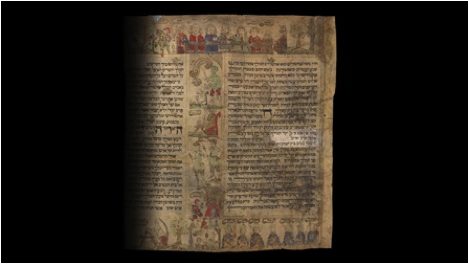
10 Things You Need to Know about Megilat Ester
Happy Purim!
Purim is a Jewish holiday based on the events in the biblical Book of Esther, which tells the story of how the Jewish woman Esther saved her people from extinction in the ancient Persian Empire. The exact age of this particular holiday is not known, but Purim has been celebrated since at least the second century C.E.

Esther scroll in ivory pull case. 17th century. (BL MS 11831)
The Book of Esther is also known as Megilat Ester, which is Hebrew for the Scroll of Esther. Because of the importance of Esther’s story in the celebrations of Purim, the Book of Esther is written on a separate scroll, which is read out loud as part of the Purim celebrations. The tradition to write the Book of Esther on a scroll dates back to c. 500 C.E.
The historical background of the events in the Book of Esther has been debated over the years. In the text, the Persian king who Esther convinces to spare her people is called Ahasuerus.
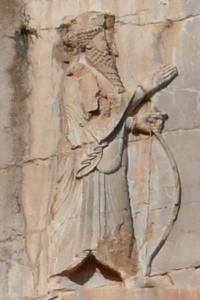
Image of Xerxes I on his tomb at Naqsh-e Rustam, Iran. (Wikipedia)
Historians have identified Ahasuerus as any of these three Persian rulers: Xerxes I (r. 485–465 B.C.E.), Artaxerxes I (r. 465–424 B.C.E.), or Artaxerxes III (r. 359–338 B.C.E.). However, some scholars claim that there is no historical background to the story of Esther at all. Instead, it is believed that Esther and her cousin Mordechai were based on the Babylonian deities of Ishtar and Marduk. Alternately, that the Book of Esther was written to boost morale during the Maccabean Revolt, which took place between 167 and 160 B.C.E. Incidentally, the Maccabean Revolt is commemorated every year during Hanukkah.
Since Megilat Ester simply means Scroll of Esther, there are several old manuscripts that this name can be applied to. Here, I would like to introduce you to one particular Esther scroll, which in the collections of the British Library is simply known as Megilat Ester (BL Or. 1047).
Here are ten things you need to know about Megilat Ester (BL Or. 1047).
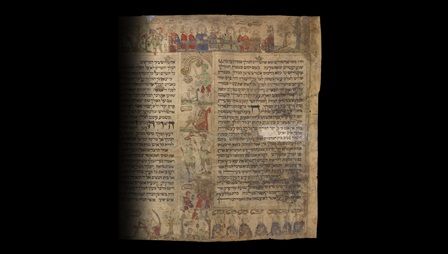
Megilat Ester (BL Or. 1047)
1) Megilat Ester is a parchment scroll that consists of eight parchment membranes stitched together and attached to a wooden roller.
2) Megilat Ester is written in Hebrew, using the Ashkenazi square script that was in use during the 17th century.
3) Through the centuries, Esther scrolls have developed into an art genre of their own with richly decorated parchment membranes, much like the Haggadah, which is used during the Passover celebrations.
4) Just as the Haggadah has become a book art genre of its own because it is not considered a holy text, Megilat Ester has also been able to get around Judaism’s ban on images in holy texts because the Book of Esther does not explicitly mention God.
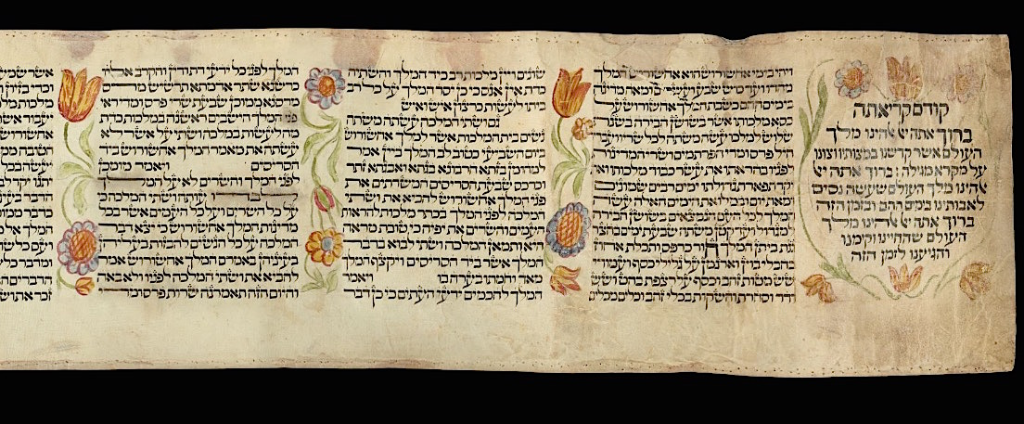
Esther scroll with floral decorations, 16th c.
(BL Egerton MS 67A)
5) Esther scroll decorations began appearing in Italy towards the end of the 16th century and reached their peak during the 17th and 18th centuries. The richest decorated scrolls come primarily from Italy and Holland, but also from Germany.
6) Megilat Ester is believed to have been made either in Holland or Germany, sometime during the 17th century, most likely during the 1630s or the 1640s.
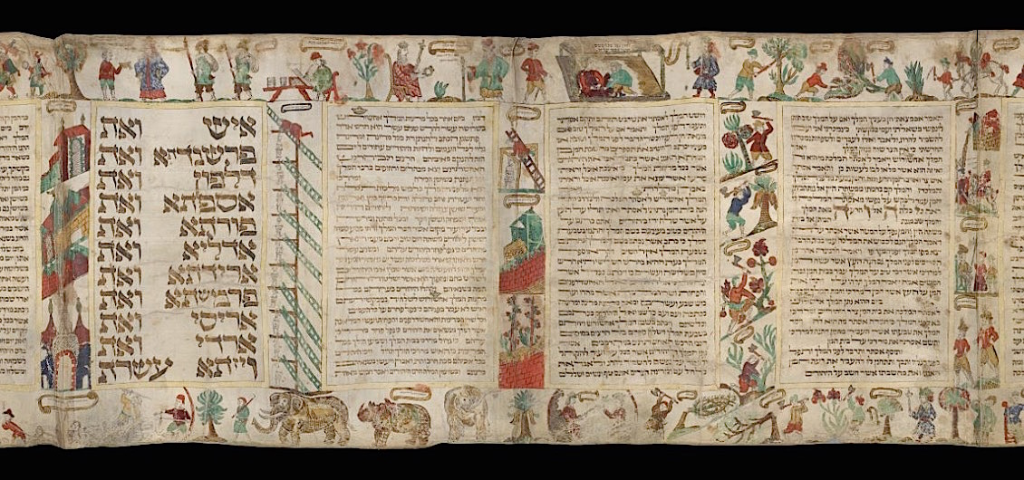
Megilat Ester (BL Or. 1047)
7) Megilat Ester is famous because of its rich illustrations of jesters, musicians, musical instruments, and the giving of gifts as part of the Purim celebrations.
8) The identity of Megilat Ester’s artist is unknown, but judging from the scroll decorations, the artist was well acquainted with Esther’s story.
9) The identity of the person who commissioned Megilat Ester is also unknown.
10) On February 24, 1871, the British Museum acquired Megilat Ester from a Rev. M. Elkin. Megilat Ester is now in the possession of the British Library.
Take a close-up look at the beautiful illustrations of Megilat Ester, which has been digitized in its entirety here.
Hungry for more amazing Jewish manuscripts? Check out these previous posts.
10 Things You Need to Know about the Golden Haggadah.
10 Things You Need to Know about the Yonah Pentateuch.











